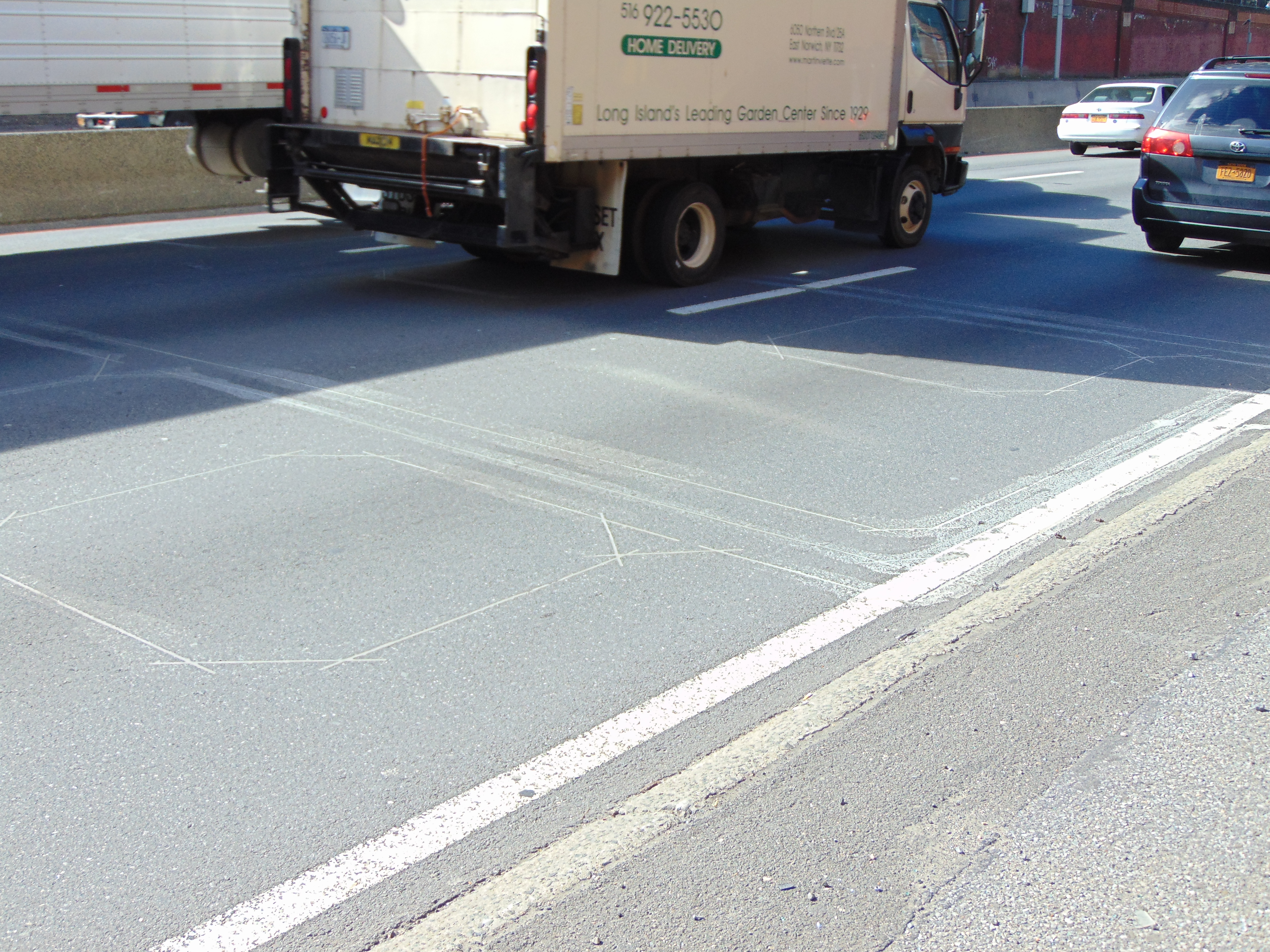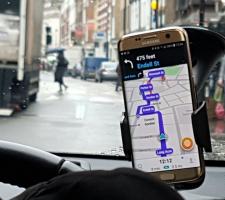
There are two big industries that stand to be revolutionised by massive increases in data – healthcare and transportation, says Finlay Clarke, the UK managing director of the smartphone sat nav traffic app,
Waze has enjoyed a remarkable increase in uptake. This year it expects to surpass 100 million users worldwide – all of whom are contributing to the wealth of data, the accuracy of the maps and the traffic information that the app has to offer. Anyone who has used Waze – your author tried it out on his family vacation this year – will know that the app has enriched the whole process of using a sat nav device.
The temptation is to think the game’s up for all other traffic information providers and sat nav services. Waze has the benefit of the powers of investment and mapping that come with being owned by Google; although, according to Clarke, the app software company has been allowed to continue operating autonomously from its big parent.
Waze supplies the app free to users and gathers its revenue from advertisers – companies that can benefit from telling drivers using the system that the end of their journey has brought them just a matter of metres from a restaurant, for instance.
Data exchange
With such a rise in popularity comes a lot of useful data and Waze has a lot of useful data to share; it has 1.7 million users in the UK and around two million driving around Los Angeles alone. Deals are being done with highway and traffic authorities – although not with any money changing hands. Instead, Waze wants to embellish its maps with up-to-date information on planned events, roadworks and any other relevant data that authorities can share for users of the Waze app.
Such agreements look like good news for all involved.
Such developments suggest Mobility as a Service (
Sol Salinas is the connected cities lead for consultant
“Having spoken with groups of government agency officers recently, I’m not convinced they’re sensing this is around the corner. At present many are gathering and building databases and models piecemeal on platforms not designed for it. Some are embracing the agenda and partnering with apps, but they’ve got to be thinking about 15 to 20 years from now. Platforms have to be data-driven, modular and scaleable; generally ready for the unknown.”
According to Salinas, the key to all this is starting off with a focus on the desired outcomes; knowing exactly what is wanted at the end. “The technology is really just a means to an end. Every smart city will be different,” he says. A good example, is Dubai, which wants to maximise productivity, so is focusing its data collection and dissemination efforts around the notion of ‘happiness’.
“Other cities have their own unique needs, although in many cases the smart city priorities come back to traffic congestion, transportation and better personal mobility to solve a disconnect across socio-economic classes. Austin, Texas, has recognised this and has ambitions for mobilising east-west connectivity with a smart corridor programme, so that the disenfranchised can benefit more from economic development.
“But it’s early days. Many cities have barely started doing the analytics and are still figuring out how to gather the data, whether it’s with dedicated short-range communications (DSRC), bluetooth, Waze, or other forms of crowd-sourced or floating car data,” Salinas says.
The game certainly isn’t up for other sources of data. There will be many sat nav systems built into dashboards and numerous other types of crowd-sourced or floating-car data, as well as traditional forms of monitoring traffic.
Data as a service
Earlier this year, ITS specialist
Since the beginning of June, IRD has been owned by Quarterhill, a holding company that started out as Wi-LAN and is now reporting to be focused on the Internet of Things (IoT).
Another company that’s gone through a similar change is
Citilog’s business development manager for North America, Irv Rosenblum, says: “Twenty years back ITS architecture was based around central software systems. As a part of Axis we have the ability to put some of the software in more hardware. This year we are introducing software as a service, making the results available to [approved users] on any device anywhere with an Internet connection.”
Such services are growing in popularity, Rosenblum says, particularly for temporary traffic monitoring and incident detection in workzone sites, relaying messages to VMS displays and traffic counts to agency traffic management centres. “We’re essentially talking about software here; it evolves rapidly and easily to customers’ demands,” Rosenblum says. With the hardware end taken care of, it’s an “exciting time” for the company, he adds: “We’ve broadened our services and expanded what we can do.”
Smart city applications
This includes smart city applications such as real-time control of traffic signals and street lighting based on vehicle and pedestrian detection counts. Rosenblum acknowledges that Citilog’s primary experience of this has been in Norway and Ireland, but the company is currently working on a proof-of-concept for a similar project in the US where video analysis will be used to count and classify traffic and then control signals and street lights accordingly.
Processing power has increased what’s possible. IRD’s Bergan sees data management as a service as an important step in a significant shift towards more automation. “Ultimately, in autonomous vehicles, data will be essential. At present, it’s mostly highway agencies managing data and providing information services for drivers, but for avoiding or reducing congestion there will be more sophisticated methods in vehicles,” he says.
So does that mean agencies will be cut out of the process, leaving apps and sat navs to do it all? “Authorities will always need oversight, but they’ll have to work with the apps and as many sources of data as possible. The more the better; decisions have to be made on very good data. Traffic management systems can give information for people before they start their journeys, but vehicles’ in-built systems will be able to make better decisions,” Bergan says.













